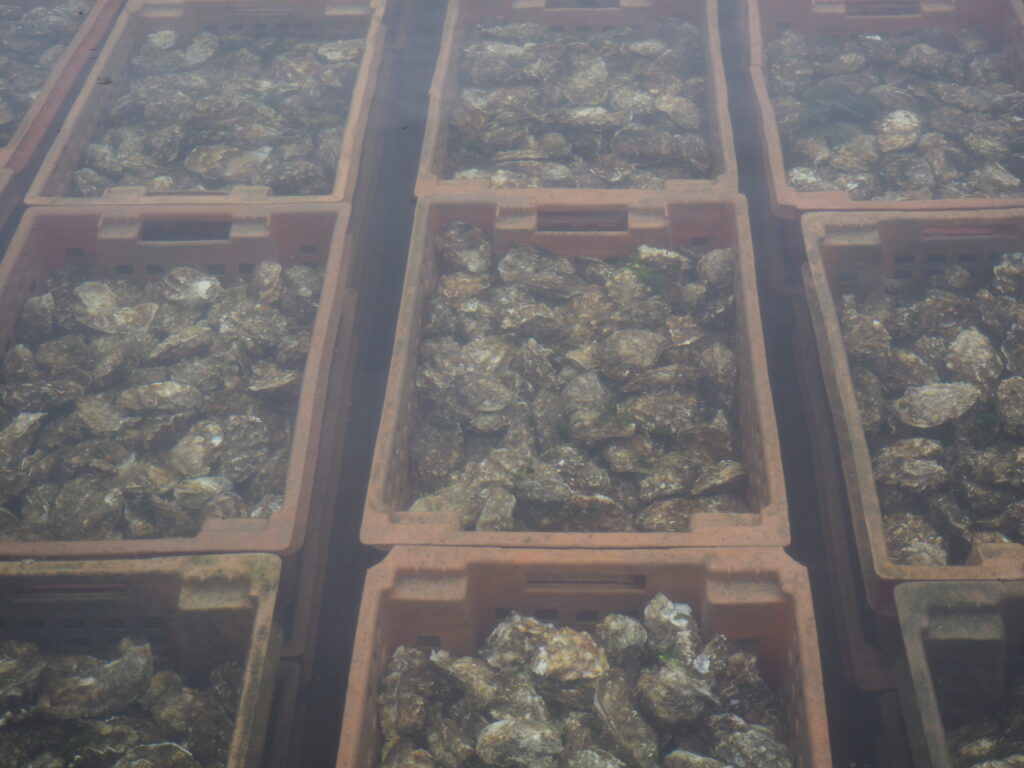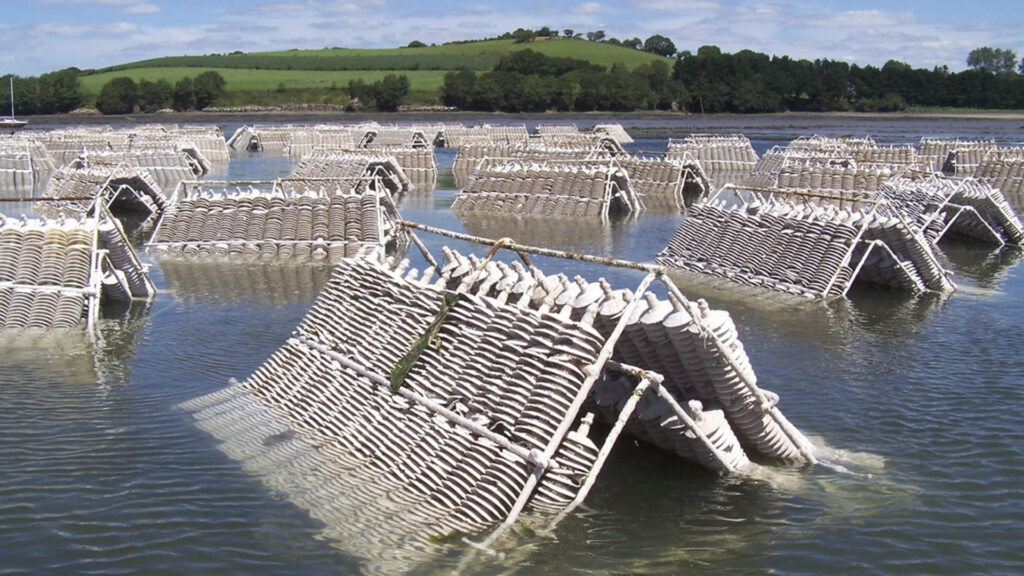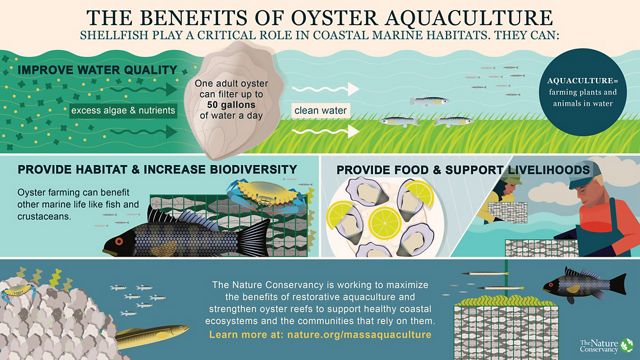
Oyster restoration initiatives play a crucial role in revitalising marine ecosystems, but their benefits extend beyond environmental conservation. Restoration projects are proving to be a boon for oyster farming and aquaculture. The interplay between restoration efforts and aquaculture creates a harmonious relationship that fosters sustainability, provides food and supports livelihoods of coastal communities.
Oyster restoration projects contribute to the revival of natural oyster reefs, providing a conducive environment for various marine species. As these ecosystems flourish, the biodiversity of the surrounding waters increases. This, in turn, benefits oyster aquaculture by creating a more resilient and diverse ecosystem for farmed oysters, which are a sustainable source of protein that can positively impact the environment.
Oysters are renowned for their water filtration capabilities, with a single oyster capable of filtering up to 200 litres of water each day. Restoration initiatives, by reintroducing oysters to their native habitats, play a vital role in improving water quality. Cleaner waters are essential for successful oyster aquaculture, as they reduce the risk of diseases and enhance the overall health of farmed oysters.

Restored oyster reefs serve as natural breeding grounds and sources of oyster larvae. The increased abundance of oyster larvae benefits aquaculture operations by providing a natural and sustainable source for seeding farmed oysters. This reduces the reliance on external sources for oyster larvae, contributing to the self-sufficiency of oyster farming.

Spat collectors – Bay of Brest in France, one of the only places where they use spat collectors anymore
Oyster reefs act as natural barriers, providing protection against storm surges and coastal erosion. The restoration of these reefs not only safeguards coastal communities but also ensures the stability of oyster aquaculture facilities. Protecting oyster farming infrastructure from the destructive forces of storms enhances the resilience and longevity of aquaculture operations.
Globally, three billion people depend on seafood as their main source of protein. While aquaculture presents an efficient means of food production compared to terrestrial agriculture, the industry has faced environmental challenges.
In Massachusetts, the oyster farming industry plays a crucial role in the coastal economy, and when managed appropriately, it has the potential to enhance the health of estuaries. Steve Kirk, the coastal programs manager for TNC in Massachusetts, emphasises their focus on both habitat restoration and sustainable commercial shellfish farming, as they believe that both approaches can offer similar and complementary benefits.

The benefits of oyster aquaculture © Jamy Silver
The Nature Conservancy is currently researching the benefits of oyster restoration for oyster farming. The study’s findings will be disseminated to shellfish farmers, natural resource managers, and the general public, aiming to support the promotion of sustainable seafood production in the future.
Oyster restoration and aquaculture are not mutually exclusive endeavours; rather, they form a dynamic partnership that benefits both the environment and the economy. As we continue to invest in the restoration of oyster reefs, we simultaneously cultivate a fertile ground for the growth of oyster aquaculture. This synergy between restoration and aquaculture exemplifies how our efforts to conserve and rebuild ecosystems can have far-reaching positive impacts, creating a win-win situation for the ocean and those who depend on them.

Make a measurable difference for the ocean today.
You can now adopt a Mother Reef and help restore 100 oysters!

